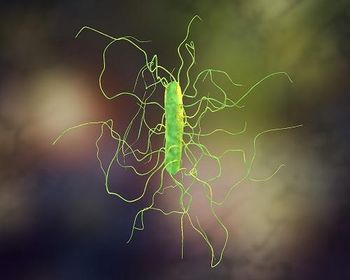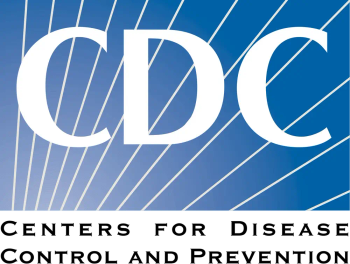
CDC: Increased Childhood Vaccine Exemptions Lead to Further Decreases in Immunizations
In a continuing trend from the last several years, a record number of families are opting out of vaccines.
The Centers for Disease Control and Prevention (CDC) reported that during the 2024-2025 school year, exemptions from 1 or more vaccines among kindergartners in the US increased to 3.6% from 3.3% the year before. Exemptions increased in 36 states and Washington DC, with 17 states reporting exemptions exceeding 5%. Additionally the number of kindergartners exempt from 1 or more vaccines was about 138,000 during the 2024-2025 school year.1
"I was speaking with some colleagues at the CDC yesterday and this is really terrible. It is a true indicator of the increase in vaccine hesitancy and anti-vaccination beliefs," Tina Tan, MD, FIDSA, FPIDS, FAAP, president, Infectious Diseases Society of America (IDSA), said of the announcement in an interview with
CDC reports there has been a trend showing a reduction in children getting their standard immunizations. In January 2023, the CDC reported that over the last 2 school years, the national coverage for childhood state-required vaccines among kindergarten students declined from 95% to approximately 93%. During the 2020-21 school year, vaccinations dropped to 94% and during the 2021-22 school year it dropped again to approximately 93%.2
Childhood immunizations for pertussis (DTaP, DT, DTP), for 2024-2025, was 92.1%, which went down slightly from the year before (2023-2024), which had a vaccination rate of 92.3%
For the measles immunization (MMR,) 92.5% of 2024-25 kindergartners got their required vaccinations, down again from the previous year, which was 92.7%.
In a
“The short answer is measles vaccination rates are too low; The long answer is when those rates go below 95%—and this is really about in a specific community…When a local community gets below 95%, that gives measles an ability to make an entrance and spread in that community,” Stinchfield said. “So we always have vulnerable people to measles; we always have babies too young to be immunized; we always have immunocompromised people; [we have] people on various therapies that make them vulnerable to measles…even when our rates are high, we've got people that will always be susceptible to measles.”
With these statistics, the likelihood of further numbers of increases in childhood diseases will increase. And we are certainly seeing that with measles and pertussis.
Measles
As of July 29, 2025, a total of 1,333 confirmed measles cases were reported by 40 jurisdictions in the US. There have been 29 outbreaks reported in 2025, and 87% of confirmed cases (1,156 of 1,333) are outbreak-associated. For comparison, 16 outbreaks were reported during 2024 and 69% of cases (198 of 285) were outbreak-associated.3
According to CDC’s statistics, 92% of measles cases were in the unvaccinated or unknown category: 4% were in the 1 MMR dose category, and 4% were in the 2 MMR dose category. 3
In terms of hospitalizations, 13% of cases were hospitalized (169 of 1333), and there have been 3 deaths.3 Going back through 2000, this year’s cases are the highest over that period and the next closest year was 2019 when there was 1,274 cases. Last year, there was 285 cases by comparison. 3
Pertussis
Pertussis (whooping cough) is a bacterial infection caused by the bacterium Bordetella pertussis, and is spread through respiratory droplets when an infected person coughs or sneezes.4 In the US, there were 35,435 reported cases of pertussis last year—the highest number in more than a decade. For comparison, there were 7,063 cases in 2023.5,6
In a previous interview with Contagion, Sharon Nachman, MD, chief of pediatric infectious diseases at Stony Brook Children's Hospital, says pertussis typically presents as a respiratory virus and illnesses, but in some cases can progess to much worse conditions.6
"Children with pertussis cough so much that they can have bleeding on their face, in their eyes, and in their lungs—and that is quite scary to see,” Nachman said. 6
She also says some pertussis patients can develop chronic lung issues, including asthma. 6
“We don’t have good numbers on how many of those children with asthma had pertussis as the inciting event that led to their asthma. Asthma is a diagnosis we make later—not in those first few months of life—and unless you know to link the two and have tested for pertussis in that first year, we can’t say how often it happens. But in prospective data, those kids who had pertussis and were followed by our pulmonary colleagues—far too often, we’re seeing kids with chronic lung disease among those who got this infection early,” she said. 6
References
1. Vaccination Coverage and Exemptions among Kindergartners. CDC. July 31, 2025. Accessed August 1, 2025.
https://www.cdc.gov/schoolvaxview/data/index.html
2. Parkinson J. Measles Outbreak in Philadelphia Prompts Caution, Calls for MMR Vaccination. ContagionLive.com. January 8, 2024.
https://www.contagionlive.com/view/measles-outbreak-in-philadelphia-prompts-caution-calls-for-mmr-vaccination
3.Measles Cases and Outbreaks. CDC. July 30, 2025. Accessed August 1, 2025.
https://www.cdc.gov/measles/data-research/index.html
4. About Whooping Cough. CDC. April 2, 2024. Accessed May 14, 2025.
https://www.cdc.gov/pertussis/about/index.html
5. 2024 Provisional Pertussis Surveillance Report. CDC. February 3, 2025. Accessed August 1, 2025.
https://www.cdc.gov/nndss/infectious-disease/weekly-and-annual-disease-data-tables.html
6. Parkinson J. Pertussis: Another Vaccine-Preventable Disease Seeing a Major Resurgence. Contagion. May 14, 2025. Accessed August 1, 2025.
https://www.contagionlive.com/view/pertussis-another-vaccine-preventable-disease-seeing-a-major-resurgence
Newsletter
Stay ahead of emerging infectious disease threats with expert insights and breaking research. Subscribe now to get updates delivered straight to your inbox.





















































































































































































































































































